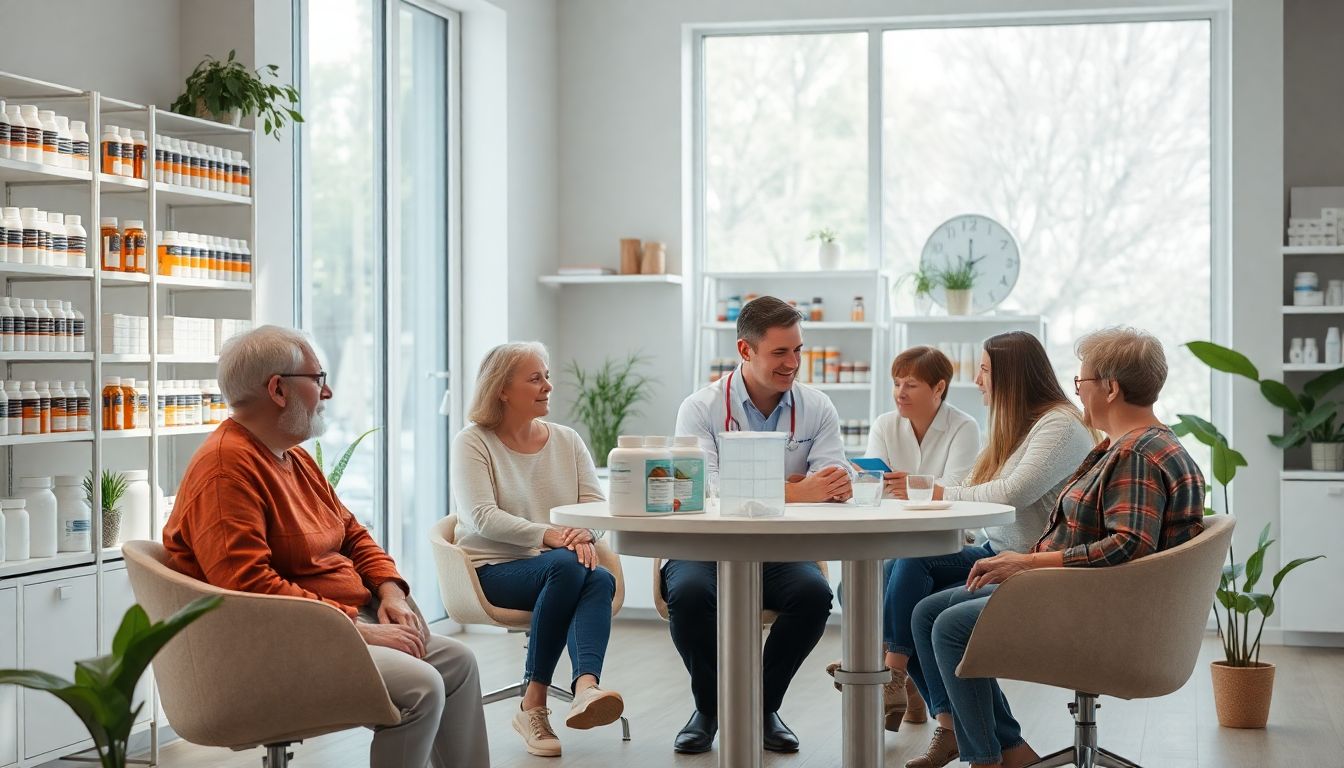Living With Gastroparesis
Gastroparesis is a disease in which your stomach does not empty properly. This can lead to symptoms of heartburn, nausea, vomiting, and feeling full sooner when eating.

Managing multiple medications can be overwhelming. Missed doses, last-minute pharmacy visits, and confusing schedules often add stress. But there’s a way to make things easier — medication synchronization. This approach helps patients stick to their plans while reducing visits to the pharmacy. More healthcare providers now see how synchronization improves health and makes life simpler.
Medication synchronization is a process that aligns all of your prescriptions so they can be refilled at the same time. Instead of shopping for medicines on different days, everything happens in one convenient visit. It’s a smarter way to stay on top of your health.
Traditional refills often mean multiple trips to the pharmacy and remembering different refill dates. Synchronization changes that by planning refills so they all occur together. This saves you time and makes managing medications more efficient.
Pharmacists work closely with you to review your prescriptions. They create a personalized plan that aligns refill dates for all your medicines. Sometimes, medications may need adjustments to fit into the same schedule. Once set, pharmacy staff monitor and update the plan as needed. When the refill date arrives, you can pick up all your medicines in one trip.
When all your prescriptions refill at the same time, it’s easier to stay on track. Studies show adherence rates jump in patients practicing synchronization. Imagine not forgetting doses because the pharmacist reminded you or the schedule is clearer. Better adherence means your medications work better, and your health improves.
Real-world examples reveal that patients who switched to synchronization experienced fewer hospital visits and better management of chronic illnesses like diabetes and high blood pressure.
Imagine not having to make multiple trips to the pharmacy each month. Synchronization cuts down on this logistical hassle. Patients say it saves them time and gives peace of mind. One patient shared, “Now I only visit the pharmacy once a month. It feels like a weight off my shoulders.”
Synchronization encourages regular check-ins with your pharmacist. Because they see your medication schedule often, they can spot issues early. This improves your overall care. Your pharmacist can answer questions, suggest alternatives, or flag potential drug interactions more easily.
Pharmacists start by reviewing your current medications and health goals. They assess which prescriptions can be coordinated and identify any issues. Then, they create a plan tailored to your needs, adjusting doses or medication types if necessary.
Pharmacies use advanced software to track refills and medication histories. These systems help pharmacists stay organized and avoid errors. Clear communication with patients is key, so pharmacies keep detailed records and send reminders.
It’s important to keep in touch with your pharmacist. If you notice changes in your health or medications, let them know. To stay on track, you can:
Some patients take many medications at different times. Synchronization might seem tough but can be done gradually. Pharmacists can start by aligning a few medicines and add others over time.
Some insurance plans may not cover synchronized refills equally. Always check with your provider to understand copays or coverage. Talking to your pharmacist about affordable options can keep costs low.
Staying motivated is crucial. Education helps patients understand the benefits of synchronization. Support from pharmacy staff also plays a key role in keeping patients committed to their plan.
Smartphone apps and reminder systems make it easier to remember refill dates. Telepharmacy allows virtual consultations, so you can discuss your medication plan from home. These tools boost adherence and make the process even simpler.
Using data analytics, pharmacies can develop more personalized plans based on your health data. This means your medication schedule can adapt to your changing needs, improving safety and effectiveness.
Current health policies encourage pharmacies to adopt synchronization programs. Over time, more clinics and hospitals will likely include this as a standard part of patient care. This shift aims to make medication management more consistent and less stressful.
Medication synchronization offers a simple way to take control of your health routine. Fewer trips, better adherence, and improved communication make it a smart choice. Talk to your pharmacist today about creating a synchronized plan. Healthcare providers should promote these programs to help their patients stay healthier and less stressed. Simplify your medication routine and enjoy peace of mind.
Gastroparesis is a disease in which your stomach does not empty properly. This can lead to symptoms of heartburn, nausea, vomiting, and feeling full sooner when eating.
Many medicines can be affected by alcohol. This includes prescription, non-prescription and natural or herbal medicines.
If you're going on vacation, you can’t forget your meds. Bringing them along can be complicated, especially if you're going overseas. How do you pack your pills? Can you stay on your dosing schedule? Will there be problems with security?
Stress management... at first glance may seem like one more difficult task requiring your time and energy, but the fact is that stress management doesn’t need to be difficult. The everyday ‘happenings’ of life can be and are stressful for many of us... so how is it that some of us are so much better at managing these than others? Discover some simple and effective ways to manage your stress by Dr. Mojgan Namazi.
Sometimes, the best way to talk about depression is just to blurt it out. All too often, people feel ashamed about their depression and believe they should be able to overcome it with willpower alone. But the truth is, with the right treatment approach, the person you care about can get better. Find out what you can do to help.
Given the significant upward trend in the consumption of alcohol over the last two years, there has been no time more critical than January 2022 to begin to make a decisive and permanent change toward healthier habits. Find out how.